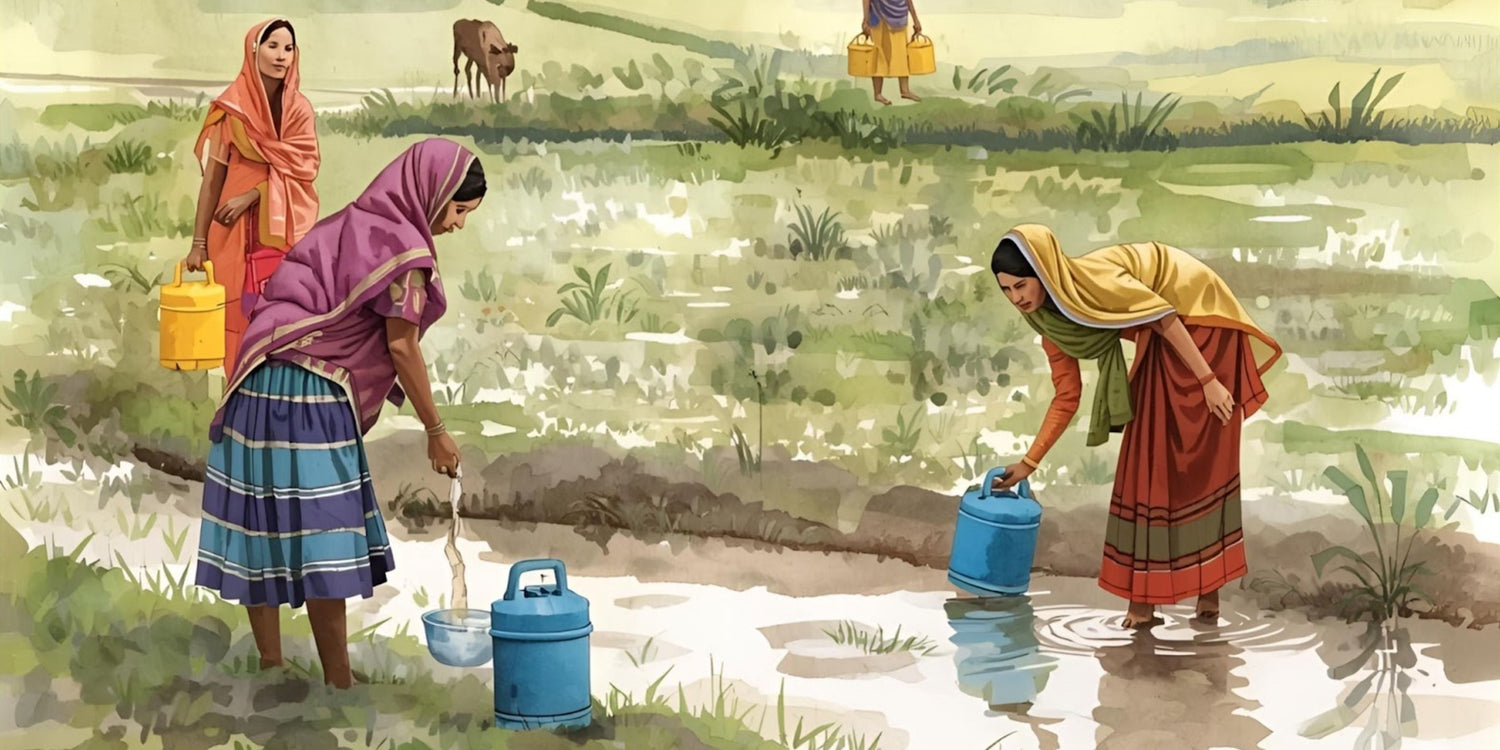Water scarcity is a major concern in many parts of India. With the population growing, managing water sustainably has become essential. Rainwater harvesting helps communities save rainwater and use it efficiently. Understanding India’s Rainwater Harvesting Schemes can help individuals, businesses, and local authorities implement them effectively. Below is a state-wise overview of key initiatives, their impact, and accessibility.
Why Rainwater Harvesting Matters in India?
Many Indian states face seasonal water shortages, despite heavy monsoon rains. By capturing and storing rainwater, households and institutions can reduce dependency on groundwater and municipal water supplies. Rainwater Harvesting India initiatives not only improve water availability but also prevent soil erosion, recharge aquifers, and promote sustainable living.
1. Jal Shakti Abhiyan: A Nationwide Push
The government launched the Jal Shakti Abhiyan to accelerate water conservation efforts across India. This programme emphasises community participation, focusing on water-stressed areas. It encourages the construction of rainwater storage structures, recharge wells, and rooftop rainwater harvesting India systems in both rural and urban regions.
Key Features:
-
Awareness campaigns for schools, households, and local bodies
-
Implementation of rainwater collecting systems in public spaces
-
Support for modern rainwater harvesting filters to improve water quality
2. Rajasthan: Rooftop Rainwater Harvesting Incentives
Rajasthan, known for its arid climate, has been a pioneer in rain water harvesting initiatives. The state provides subsidies for installing rooftop harvesting systems and promotes community tanks to store excess rainwater. Many villages have successfully implemented underground recharge structures to maintain groundwater levels.
3. Tamil Nadu: Mandatory Rainwater Systems
Tamil Nadu has made rainwater harvesting compulsory for new buildings in urban areas. This regulation ensures that rooftops are equipped with collection systems connected to rainwater filter accessories, maintaining water quality before storage. The state’s focus on urban areas has reduced dependence on public water supplies and helped maintain sustainable groundwater levels.
4. Maharashtra: Combining Traditional and Modern Methods
Maharashtra has integrated traditional water conservation techniques with modern rainwater collecting systems. The state supports community-based projects like check dams and percolation tanks while promoting household rooftop harvesting with government subsidies. Initiatives like these not only conserve water but also create employment opportunities in rural areas.
5. Karnataka: Reviving Tanks and Lakes
Karnataka focuses on reviving existing water bodies along with promoting rain water harvesting filters. The government has encouraged municipalities and residents to adopt rooftop harvesting, linking them to local tanks and lakes for groundwater recharge. These combined efforts have significantly improved water availability in drought-prone areas.
6. Delhi: Urban Rooftop Initiatives
Delhi faces severe urban water stress due to high population density. The city’s rainwater harvesting initiatives include mandatory rooftop collection for residential and commercial buildings. The use of rainwater filter ensures clean water storage, reducing the pressure on municipal supplies and promoting sustainable urban living.
7. Gujarat: Industrial Focus
Gujarat has targeted both residential and industrial sectors to implement rainwater harvesting filters and storage solutions. Industries are encouraged to harvest rainwater to meet their operational needs, reducing groundwater extraction. This approach has made Gujarat one of the leading states in industrial water sustainability.
8. West Bengal: Community Participation
West Bengal’s schemes focus on community participation. Villages and urban wards collaborate to build rainwater harvesting systems in public spaces, schools, and hospitals. These initiatives highlight the importance of collective responsibility for water conservation.
Steps to Implement Rainwater Harvesting at Home
Even if your state doesn’t offer direct incentives, individuals can adopt these practical steps:
-
Install Rooftop Systems: Collect rainwater from rooftops and channel it into storage tanks.
-
Use Quality Filters: Incorporate rainwater filters to ensure the harvested water is safe for use.
-
Recharge Groundwater: Direct overflow water into recharge pits or borewells to replenish aquifers.
-
Maintain: Clean tanks, pipes, and filters to prevent contamination.
-
Monitor Usage: Use stored water judiciously for domestic and gardening purposes.
These simple measures make a significant difference in water conservation and complement state-led initiatives like the Jal Shakti Abhiyan.
Benefits of State-Wise Rainwater Harvesting Schemes
-
Reduces dependency on groundwater and municipal supplies
-
Enhances water security in drought-prone areas
-
Promotes environmental sustainability
-
Encourages community awareness and participation
-
Supports urban planning and reduces flooding risk
Making the Most of Rainwater Harvesting Filters
Investing in Rainwater Harvesting Filters ensures that collected rainwater remains clean and safe for use. Accessories like mesh screens, sediment traps, and first-flush systems prevent debris and contaminants from entering storage tanks. By combining these filters with rainwater filter accessories, households and institutions can maximise the benefits of rainwater harvesting.
Key Takeaways:
-
Rainwater harvesting is vital for addressing India’s water scarcity challenges.
-
State-specific schemes provide subsidies, regulations, and community initiatives to support water conservation.
-
Rooftop rainwater harvesting and proper filters are essential for clean, safe water storage.
-
Community involvement and awareness are critical for the success of these programmes.
-
Combining traditional methods with modern technology enhances water security and sustainability.
FAQ’s:
1. What is the purpose of rainwater harvesting in India?
Rainwater harvesting helps conserve water, recharge groundwater, reduce dependency on municipal supplies, and prevent water scarcity in urban and rural areas.
2. Are rainwater harvesting systems mandatory in India?
Some states, like Tamil Nadu and Delhi, have made rooftop harvesting mandatory for new buildings, while other states encourage it through subsidies and awareness campaigns.
3. How do rainwater harvesting filters work?
These filters remove debris, sediment, and contaminants from collected rainwater, ensuring clean water storage for domestic and industrial use.
4. Can industrial sectors benefit from rainwater harvesting?
Yes. Industries can use harvested rainwater for operations, cooling, and landscaping, reducing groundwater extraction and operational costs.
5. What are the key government initiatives for water conservation?
The Jal Shakti Abhiyan is a major nationwide initiative promoting rainwater harvesting, water body rejuvenation, and community participation for sustainable water management.
With the growing need for water conservation, understanding state-specific schemes and investing in Rainwater Harvesting Filters is essential for sustainable living and long-term water security.

